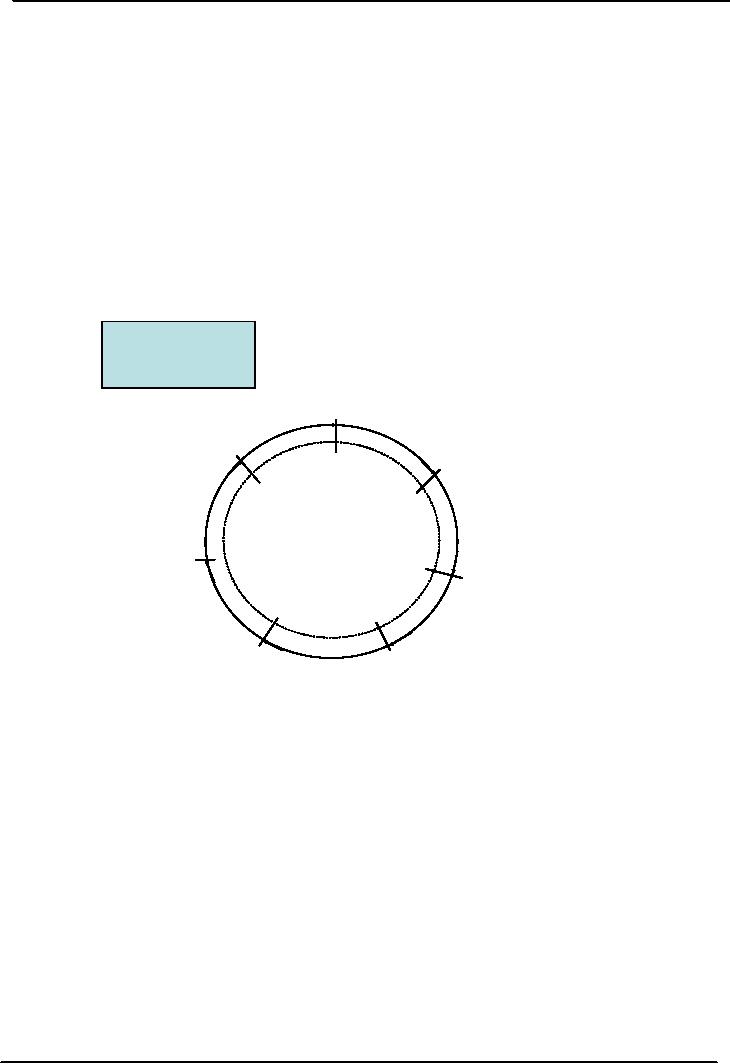 |
GESTALT THERAPY:Role of the Counselor, Assessment |
| << GESTALT THERAPY:Fritz Perls, Causes of Human Difficulties |
| EXISTENTIAL THERAPY:Rollo May, Role of Counselor, Logotherapy >> |

Theory
and Practice of Counseling -
PSY632
VU
LESSON
30
GESTALT
THERAPY
Role
of the Counselor
The
role of the Gestalt counselor is to
create an atmosphere that
promotes a client's exploration of what
is
needed
in order to grow. Polster
and Polster (1973) indicate
that the gestalt counselors
must be exciting,
energetic
and fully human. Involvement
occurs in the now which is a
continuing process.
There
are several rules that
Gestalt counselors follow in helping
clients become more aware of
the now:
�
The
principle of now: always
using the present
tense
�
I
and Thou: always addressing
someone directly instead if talking
about him or her to the
counselor.
�
The
use of I: substituting the word I for
it, especially when talking about the
body.
�
The
use of an awareness continuum:
Focusing on how
and
what
rather
than why
�
The
convention of questions: asking
clients to convert questions
into statements
�
Gestalt
counselors do not use
standardized assessment instruments,
such as psychological tests,
nor
do
they diagnose their clients
according DSM-IV classification
standard.
�
Therapist
examples:
counselor sets example for
client by being an open and aware
person.
�
Role
play:
counselor and/or client
engages in role play to help the
client manage
feelings.
�
Nonverbal-behavior
congruence:
counselor encourages client to be in
touch with whether verbal
behavior
matches nonverbal behavior. In
order to probe the patient's defenses
and expose the
games
being displayed, therapist often pays
close attention to nonverbal
behavior. The
counselor
also
uses posture cues to get to
the feelings that exist
now.
Goals
Perls
(1970) developed a formula that
expresses the word's essence: "Now =
experience = awareness=
realy.
"The
past is no more and the future
not yet. Only the now
exists"(p.14).
�
Getting
clients to accept responsibility for
their own actions and
feelings
�
To
expose the games clients
play and the defenses behind
which they hide. To expose the
games
clients
play and the defenses behind
which they hide. To experience and
become aware of these
shams
is an important goal pf counseling.
The experience of awareness
may be threatening for the
client.
Perls(1970)
identifies five layers of
neurosis that potentially
interface with being authentically to
touch with
oneself:
1.
The Clich�
layers
consists of noncontacts/ pretending to be
something that one is
not.
2.
The phony
layer:
Role-playing layer. It refers to an attempt to
avoid recognizing aspects of
self that
the
person would prefer to deny.
3.
Below this layer is the impasse layer,
where individuals wonder how they
are going to make it in the
environment.
4.
The fourth and fifth
layers, the impulsive and explosive are
often grouped together. People at
these
layers
frequently feel vulnerable to feelings.
When people peel back the
layers of defensiveness
(implosion)
then they experience explosion of joy,
sorrow or pain that leads to being
authentic.
When
persons reach this point, the
now can be experienced most
fully.
Techniques
Some
of the most innovative counseling
techniques ever developed are
found in Gestalt therapy. These
techniques
take two forms: exercise and
experiments.
127

Theory
and Practice of Counseling -
PSY632
VU
�
Exercises
are
ready made techniques such
as the enactment of fantasies, role
playing and
psychodrama
(Covin, 1977). They are
employed to evoke a certain response
from the client, such as
anger
or exploration.
�
Experiments
on the
other hand, are activities
that grow out of the
interaction between counselor
and
client.
They are not planned and what is
learned is often a surprise to
both the client and the
counselor.
Many of the techniques of Gestalt therapy
take the form of unplanned
experiments.
Common
Exercises employed in Gestalt
Therapy:
�
One common
exercise is dream work.
Perls describes dreams as
message that represents a
person's
place
at a certain time. Dream is a kind of
condensed reflection of the individual's
own existence
and
the ways used to avoid facing
oneself. The person with
repetitive dreams is encouraged
to
realize
that unfinished business being
brought into awareness and
that there is a need to take
care
of
the message delivered. Gestaltists believe
that:
o
The
dream conveys
messages
o
The
dream also epitomizes the contradicting
sides of the self
�
Another
effective technique is the empty chair, in this
procedure clients talk to the
various parts of
their
personality, such as the part that is
dominant and the part that
is passive.
�
One of the
most powerful Gestalt exercises is
confrontation. Confrontation involves
asking clients
what
and how questions.
�
Making
the rounds: Some powerful Gestalt
exercises are individually
oriented but used primarily
in
group.
This technique is employed if the
counselor thinks that the
theme applies to everyone in
the
group.
�
I
take responsibility: in this exercise
clients make statements
about perceptions and close
each
statement
with the phrases "and I take
responsibility for it". To repeat
again & again and
louder
and
louder the important remarks is the
technique. Benefits of these
games is not
demonstrated
empirically
�
Exaggeration.
Clients accentuate unwitting movement or
gestures.
�
May
I feed you a sentence: The
counselor asks if the client
will say a certain sentence
(provided by
the
counselor) that makes the
client's thoughts explicit.
�
Locating
feelings
Evaluation:
Strengths
�
The
approach emphasizes helping people
incorporate and accepts all
aspects of life.
�
The
approach helps a client focus on
resolving areas of unfinished
business
�
The
approach places primary emphasis on
doing rather than
talking.
�
The
approach is flexible and not
limited to a few techniques
�
The
approach is appropriate for certain
affective disorders anxiety states somatoform
disorders,
adjustment
disorders and DSM-IV
diagnoses such as occupational problems
and interpersonal
problem.
Evaluation:
Limitations.
�
The
approach lacks a strong theoretical
base. Some critics view
Gestalt counseling as all
experience
and
techniques.
�
The
approach deals strictly with the
now and how of
experience
�
The
approach eschews diagnoses
and testing
The
approach is too concerned
with individual development and is
criticized for its
self-centeredness.
Summary
and Conclusion
Gestalt
therapy also continues to generate strong
interest among practitioners. As a group,
effective
approaches
do not make much use of
psychological tests, formal
diagnoses, or rigid procedures.
A
trademark
of these approaches is that they
tailor what they do to the needs of the client.
Counselors assess
128

Theory
and Practice of Counseling -
PSY632
VU
needs
by establishing strong relationship with
clients. Existential counseling is the
most nondirective of the
theories
while Gestalt therapy is the most
directive.
Farzana:
Gestalt Perspective
Assessment:
�
Examining
the process that occurs as the
individual interacts with
self and environment
�
The
need fulfillment model refers to a "cycle
of experience" which begins with
physical or
emotional
sensations and proceeds
through awareness, excitement,
and toward contact with
the
environment
�
The
panic attack continues
because she is unable to move
from the sensation level into
some type
of
action
Awarenes
s
The
Gestalt Need-
Interrupted
by introjections
Fulfillm
ent
("s
houlds " and "oughts ")
and
Cycle
projections
Sens
ation
Excitement
Panic,
Anxiety, dizziness ,
Interrupted
by anxiety
heart
palpitations , and
over
her right to think
headaches
occur.
and
act selfishly ; cannot
move
toward action.
New
figure
Cannot
move to new
figur
e, because old ones
Closure
remain
to disturb new
No
closure,
Action
organ
ization
because
Interrupted
by retro
satisfaction
flection,
p unishing
of
needs does
self
through guilt
not
occur.
and
self-
recrimination
Contact
Withdra
wal
Cannot
be made, because action
can
Since
contact is not
never
be dir ected p urp osely
toward
made,
there is nothin g
the
"other"
to
withdraw from.
�
Goals:
Providing
a context in which Farzana
can expand her awareness of
what is going on within
herself
�
Counseling
Procedures:
Experiential
techniques aimed at identifying
here-andnow
�
Techniques:
Empty
chair: she can indulge in
conversation, dialogues with
different facets of herself,
and
also
with different characters in
her life.
Dream
analysis
Homework
to reduce polarities: for example
eating slowly so that she
gets a sensation of
fullness,
and also achieve the goal of
slimness.
129

Theory
and Practice of Counseling -
PSY632
VU
Noticing
nonverbals: (e.g., Farzana's
fidgeting with clothes).
Asking her what else
she
might
like to do with her
hands?
130
Table of Contents:
- INTRODUCTION:Counseling Journals, Definitions of Counseling
- HISTORICAL BACKGROUND COUNSELING & PSYCHOTHERAPY
- HISTORICAL BACKGROUND 1900-1909:Frank Parson, Psychopathic Hospitals
- HISTORICAL BACKGROUND:Recent Trends in Counseling
- GOALS & ACTIVITIES GOALS OF COUNSELING:Facilitating Behavior Change
- ETHICAL & LEGAL ISSUES IN COUNSELING:Development of Codes
- ETHICAL & LEGAL ISSUES IN COUNSELING:Keeping Relationships Professional
- EFFECTIVE COUNSELOR:Personal Characteristics Model
- EFFECTIVE COUNSELOR:Humanism, People Orientation, Intellectual Curiosity
- EFFECTIVE COUNSELOR:Cultural Bias in Theory and Practice, Stress and Burnout
- COUNSELING SKILLS:Microskills, Body Language & Movement, Paralinguistics
- COUNSELING SKILLS COUNSELOR’S NONVERBAL COMMUNICATION:Use of Space
- COUNSELING SKILLS HINTS TO MAINTAIN CONGRUENCE:
- LISTENING & UNDERSTANDING SKILLS:Barriers to an Accepting Attitude
- LISTENING & UNDERSTANDING SKILLS:Suggestive Questions,
- LISTENING & UNDERSTANDING SKILLS:Tips for Paraphrasing, Summarizing Skills
- INFLUENCING SKILLS:Basic Listening Sequence (BLS), Interpretation/ Reframing
- FOCUSING & CHALLENGING SKILLS:Focused and Selective Attention, Family focus
- COUNSELING PROCESS:Link to the Previous Lecture
- COUNSELING PROCESS:The Initial Session, Counselor-initiated, Advice Giving
- COUNSELING PROCESS:Transference & Counter-transference
- THEORY IN THE PRACTICE OF COUNSELING:Timing of Termination
- PSYCHOANALYTIC APPROACHES TO COUNSELING:View of Human Nature
- CLASSICAL PSYCHOANALYTIC APPROACH:Psychic Determination, Anxiety
- NEO-FREUDIANS:Strengths, Weaknesses, NEO-FREUDIANS, Family Constellation
- NEO-FREUDIANS:Task setting, Composition of Personality, The Shadow
- NEO-FREUDIANS:Ten Neurotic Needs, Modes of Experiencing
- CLIENT-CENTERED APPROACH:Background of his approach, Techniques
- GESTALT THERAPY:Fritz Perls, Causes of Human Difficulties
- GESTALT THERAPY:Role of the Counselor, Assessment
- EXISTENTIAL THERAPY:Rollo May, Role of Counselor, Logotherapy
- COGNITIVE APPROACHES TO COUNSELING:Stress-Inoculation Therapy
- COGNITIVE APPROACHES TO COUNSELING:Role of the Counselor
- TRANSACTIONAL ANALYSIS:Eric Berne, The child ego state, Transactional Analysis
- BEHAVIORAL APPROACHES:Respondent Learning, Social Learning Theory
- BEHAVIORAL APPROACHES:Use of reinforcers, Maintenance, Extinction
- REALITY THERAPY:Role of the Counselor, Strengths, Limitations
- GROUPS IN COUNSELING:Major benefits, Traditional & Historical Groups
- GROUPS IN COUNSELING:Humanistic Groups, Gestalt Groups
- MARRIAGE & FAMILY COUNSELING:Systems Theory, Postwar changes
- MARRIAGE & FAMILY COUNSELING:Concepts Related to Circular Causality
- CAREER COUNSELING:Situational Approaches, Decision Theory
- COMMUNITY COUNSELING & CONSULTING:Community Counseling
- DIAGNOSIS & ASSESSMENT:Assessment Techniques, Observation
- FINAL OVERVIEW:Ethical issues, Influencing skills, Counseling Approaches